Themed collection Modern Main Group Chemistry

Modern main group chemistry
Guest editors Simon Aldridge and Cameron Jones introduce the Modern Main Group Chemistry issue of Chemical Society Reviews

Chem. Soc. Rev., 2016,45, 763-764
https://doi.org/10.1039/C6CS90014C
Polyether complexes of groups 13 and 14
Notable aspects of the chemistry of polyether complexes of group 13 and 14 elements are reviewed.
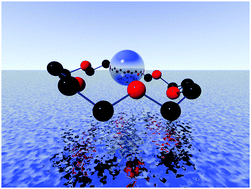
Chem. Soc. Rev., 2016,45, 3883-3915
https://doi.org/10.1039/C5CS00934K
Recent highlights in mixed-coordinate oligophosphorus chemistry
This review aims to highlight and comprehensively summarize recent developments in the field of P–P bonded compounds with different bonding modes of the phosphorus atoms.

Chem. Soc. Rev., 2016,45, 1145-1172
https://doi.org/10.1039/C5CS00682A
Donor–acceptor bonding in novel low-coordinated compounds of boron and group-14 atoms C–Sn
Donor–acceptor complexes of one, two or three atoms E = B, Si–Sn which are stabilized by σ-donor ligands L are discussed.
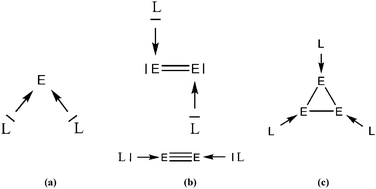
Chem. Soc. Rev., 2016,45, 1129-1144
https://doi.org/10.1039/C5CS00815H
Alkaline earths as main group reagents in molecular catalysis
The past decade has witnessed some remarkable advances in our appreciation of the structural and reaction chemistry of the heavier alkaline earth (Ae = Mg, Ca, Sr, Ba) elements.
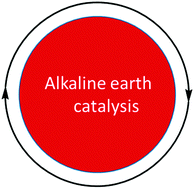
Chem. Soc. Rev., 2016,45, 972-988
https://doi.org/10.1039/C5CS00880H
s-Block amidoboranes: syntheses, structures, reactivity and applications
The highly versatile amidoborane compounds of the group 1 and 2 metals are reviewed, with an emphasis on their synthesis, structures and reactivity.
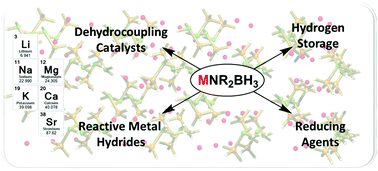
Chem. Soc. Rev., 2016,45, 1112-1128
https://doi.org/10.1039/C5CS00544B
Reactive p-block cations stabilized by weakly coordinating anions
The chemistry of the p-block elements is a huge playground for fundamental and applied work.
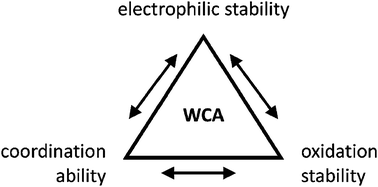
Chem. Soc. Rev., 2016,45, 789-899
https://doi.org/10.1039/C5CS00672D
Silicon based radicals, radical ions, diradicals and diradicaloids
Diradical (cAAC˙)2SiCl2 is isolated in two polymorphic forms. The crystals of one of the polymorphs are stable in open air for over a week.
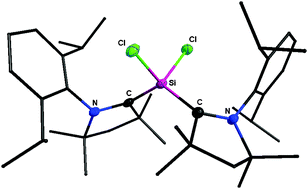
Chem. Soc. Rev., 2016,45, 1080-1111
https://doi.org/10.1039/C5CS00739A
Complexes of ambiphilic ligands: reactivity and catalytic applications
This review focuses on the way Lewis acids of ambiphilic ligands influence the reactivity of transition metal complexes and on the new perspectives this opens in catalysis.
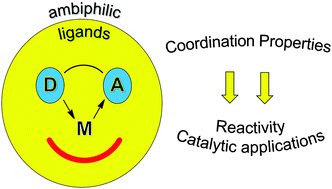
Chem. Soc. Rev., 2016,45, 1065-1079
https://doi.org/10.1039/C5CS00697J
[18F]-Group 13 fluoride derivatives as radiotracers for positron emission tomography
This article reviews the radiofluorination chemistry of group 13 derivative as well as their use for 18F-PET Imaging.
![Graphical abstract: [18F]-Group 13 fluoride derivatives as radiotracers for positron emission tomography](/en/Image/Get?imageInfo.ImageType=GA&imageInfo.ImageIdentifier.ManuscriptID=C5CS00687B&imageInfo.ImageIdentifier.Year=2016)
Chem. Soc. Rev., 2016,45, 954-971
https://doi.org/10.1039/C5CS00687B
Polymers and the p-block elements
A survey of the state-of-the-art in the development of synthetic methods to incorporate p-block elements into polymers is given.
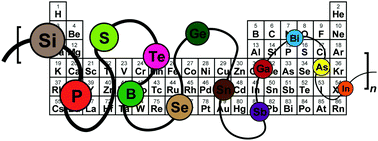
Chem. Soc. Rev., 2016,45, 922-953
https://doi.org/10.1039/C5CS00725A
Reactivity in the periphery of functionalised multiple bonds of heavier group 14 elements
Stable heavier alkene homologues with secondary functional groups are discussed emphasizing peripheral transformations under retention of the heavier double bond.
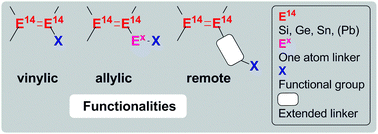
Chem. Soc. Rev., 2016,45, 900-921
https://doi.org/10.1039/C5CS00720H
Solution based CVD of main group materials
Advances in the last decade in the field of AACVD of main group elements in semiconducting and TCO devices and photoelectrochemical and gas sensing materials are described.
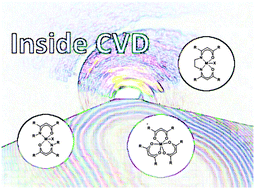
Chem. Soc. Rev., 2016,45, 1036-1064
https://doi.org/10.1039/C5CS00651A
Cycloaddition of carbonyl compounds and alkynes to (di)silenes and (di)germenes: reactivity and mechanism
The cycloaddition reactions of carbonyl compounds and alkynes to (di)tetrelenes appear to follow Woodward–Hoffman rules.
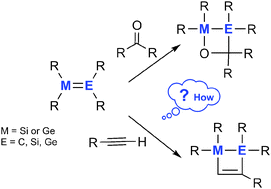
Chem. Soc. Rev., 2016,45, 1019-1035
https://doi.org/10.1039/C5CS00522A
Extremely bulky amide ligands in main group chemistry
The development of extremely sterically demanding, monodentate amide ligands facilitates the isolation of main group species with new and highly reactive coordination modes. An outstanding feature of these ligands is the ability to tune their steric demands. Reactivity investigations highlight the potential for small molecule activation chemistry and catalysis for these compounds.
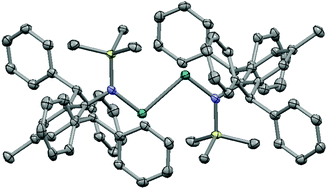
Chem. Soc. Rev., 2016,45, 1004-1018
https://doi.org/10.1039/C5CS00513B
Group 14 inorganic hydrocarbon analogues
This Review article deals with the synthesis and properties of inorganic hydrocarbon analogues: binary chemical species that contain heavier Group 14 elements (Si, Ge, Sn or Pb) and hydrogen as components. Rapid advances in our general knowledge of these species have enabled the development of industrially relevant processes such as the hydrosilylation of unsaturated substrates and the chemical vapor deposition of semi-conducting films.
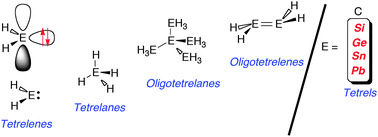
Chem. Soc. Rev., 2016,45, 989-1003
https://doi.org/10.1039/C5CS00365B
Phosphorus Lewis acids: emerging reactivity and applications in catalysis
Part of the renaissance in main group chemistry has been a result of the focus on reactivity and catalysis. In this tutorial review, we focus attention on the role of phosphorus-based Lewis acids in such advances.
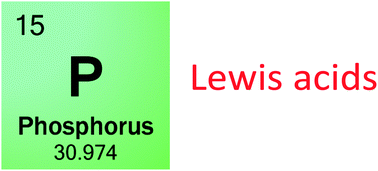
Chem. Soc. Rev., 2016,45, 765-774
https://doi.org/10.1039/C5CS00516G
Dehydrocoupling routes to element–element bonds catalysed by main group compounds
This Tutorial Review focuses on recent applications of main group compounds in the catalytic synthesis of heteronuclear element–element bonds within the p-block.
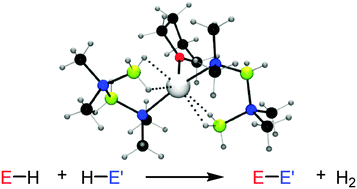
Chem. Soc. Rev., 2016,45, 775-788
https://doi.org/10.1039/C5CS00521C
About this collection
Main Group chemistry has undergone a significant transformation in recent years, with many of the boundaries traditionally associated with area being challenged, and even broken. Edited by Simon Aldridge and Cameron Jones, this themed issue focuses on the recent advances in the field, spanning a wide breadth of topics ranging from synthesis (of both molecular species and materials), and fundamental issues of structure/bonding, to new approaches to bond activation and catalysis. New articles will be added to this collection as they are published.